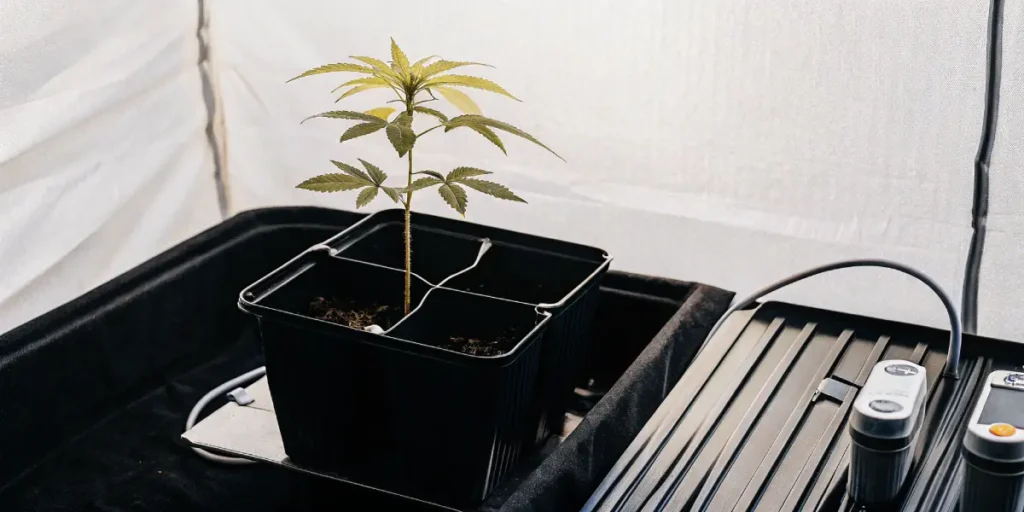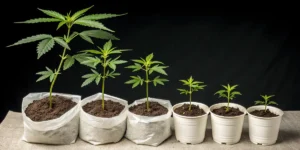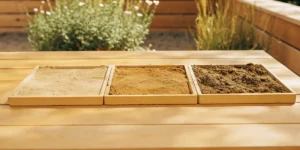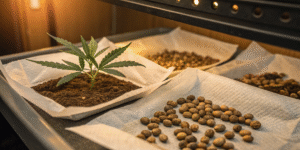Growing LSD auto, a popular autoflowering cannabis strain known for its potent effects and robust growth, can be a rewarding endeavor for both novice and experienced cultivators. This strain is celebrated for its resilience and relatively easy maintenance, making it an excellent choice for those venturing into autoflowering varieties. Like any cannabis plant, it requires a mindful approach to ensure optimal yield and quality. Knowing the unique traits of LSD auto plants can greatly enhance your growing experience.
The first critical step in growing LSD auto is selecting the right medium and environment. These plants can thrive in both soil and hydroponic setups, although soil is often favored for its ability to enhance flavor profiles. Ensure your growing medium is well-aerated and rich in nutrients. As autoflowering strains do not rely on light cycles to begin flowering, LSD auto can benefit from a consistent 18-24 hours of light a day. Utilizing LED lights can be efficient for indoor growing, offering ample light while keeping energy costs down. Additionally, maintaining temperature levels between 68-77°F (20-25°C) and a humidity level of around 40-50% will support healthy growth.
Feeding and watering need special attention with LSD auto due to its fast flowering cycle. Opt for a balanced nutrient regime that supports both vegetative and flowering stages. High-quality, organic nutrients can enhance plant health and bud quality, ensuring denser and more potent flowers. It is essential to avoid overwatering by allowing the top inch of soil to dry out before rewatering. Regular monitoring and adjusting of pH levels, ideally between 6.0 and 7.0 for soil, can prevent nutrient lockout and promote robust growth.
As LSD auto reaches maturity quickly, typically around 8-10 weeks from seed to harvest, frequent observation is crucial to identify when plants are ready for harvest. Look for pistils that are mostly brown and trichomes that appear milky or slightly amber in color. These are key indicators that the plant is at its peak potency. Properly drying and curing your harvest is essential to preserve flavors and potency, ensuring the final product is both enjoyable and effective. Allow the buds to dry slowly in a dark, well-ventilated area before curing in airtight containers.
Growing LSD auto can be a simple yet fulfilling process with the right knowledge and strategies. By providing a stable environment, proper nutrients, and attentive management, growers can achieve a bountiful harvest of high-quality cannabis. This strain’s easy-going nature and impressive yields make it a solid choice for anyone looking to delve into the world of autoflowering cannabis cultivation.
lsd auto Strain Overview: Traits, Effects & Genetics
The LSD Auto strain is a highly sought-after variety in the cannabis cultivation community, known for its potent effects and robust growth characteristics. As an autoflowering version of the original LSD strain, it inherits the best traits from its parent, making it a favorite among growers and users. This strain is particularly popular for its short growth cycle, allowing for multiple harvests per year. With a compact stature and bushy appearance, LSD Auto is suitable for both indoor and outdoor cultivation, providing flexibility for growers with limited space.
Genetically, LSD Auto is a brilliant blend of the potent LSD strain and a selected autoflowering specimen, providing a perfect fusion of high THC content and rapid growth. The original LSD strain is a cross between Mazar-I-Sharif and Skunk #1, resulting in a strain revered for its resilience and psychoactive effects. The autoflowering aspect comes from the inclusion of Ruderalis genetics, which gives LSD Auto its automatic flowering capability without the need for changing light cycles. This genetic mix is why LSD Auto is celebrated for its ease of cultivation and quick turnover.
In terms of effects, LSD Auto is renowned for delivering a powerful, euphoric high that is both cerebral and deeply relaxing. Users often report a sense of heightened creativity and focus, coupled with an uplifting mood, making it a great strain for social settings or solo creative endeavors. Medicinally, it is noted for its potential to alleviate stress, anxiety, and even mild pain. This strain tends to have a moderate to high THC level, typically ranging from 15% to 20%, providing a balanced yet potent experience.
The aroma and flavor profile of LSD Auto are distinctive, characterized by a pungent, earthy scent with sweet and citrusy undertones. The taste is equally unique, often described as a mix of herbal and fruity notes with a slight skunkiness, a nod to its Skunk #1 heritage. This rich combination of flavors and effects makes LSD Auto not only a delight to cultivate but also a rewarding strain to consume. Its robust genetics ensure a consistent yield of fragrant, resin-rich buds, making it an appealing choice for both novice and experienced growers.
Optimal Environment to Grow LSD Auto Successfully
Growing LSD Auto, an autoflowering cannabis strain, requires specific environmental conditions to ensure that the plants thrive and yield potent buds. This strain is known for its robustness and resilience, which makes it a favorite among both novice and experienced growers. However, to maximize its potential, attention to detail regarding the environment is crucial. This includes factors like light, temperature, humidity, and nutrition, all of which play pivotal roles in the plant’s development and the final product’s quality.
Lighting plays a critical role in the growth of LSD Auto plants. Being an autoflowering strain, LSD Auto does not rely exclusively on light cycles to trigger the flowering stage. However, providing about 18-24 hours of light daily is beneficial to achieve optimal growth. LED lights are often recommended because of their efficiency and ability to closely replicate sunlight. This intensive light schedule allows plants to photosynthesize effectively, promoting vigorous growth and bountiful bud production.
Temperature management is another vital aspect of cultivating LSD Auto. Ideally, the growing space should maintain a daytime temperature range of 70-85°F (21-29°C) and slightly cooler nights, falling between 60-70°F (15-21°C). This helps in maintaining plant metabolism and reduces stress. Extreme temperatures outside these ranges can lead to poor growth and reduced potency, thereby affecting the overall yield negatively.
Humidity control is equally essential. During the vegetative stage, maintaining a relative humidity (RH) of 40-60% is important to facilitate healthy leaf and stem growth. As the plants transition to flowering, lowering the humidity to around 30-40% helps prevent mold and mildew, particularly as the buds gain density. Using dehumidifiers or humidifiers accordingly can help maintain these levels consistently.
Proper nutrient management rounds up the environmental conditions for growing LSD Auto successfully. A balanced feeding regime that supplies necessary macro and micronutrients is essential for robust growth. Autoflowering strains typically require less intense nutrient concentrations compared to photoperiod strains. Hence, using a high-quality cannabis-specific nutrient line and starting with a lower concentration, gradually increasing as needed, is recommended. Ensuring the pH level of the growing medium remains stable, ideally between 6.0 and 6.5, is also crucial for optimal nutrient uptake.
By carefully managing these environmental factors, growers can optimize their conditions to successfully cultivate LSD Auto. The reward is typically a great yield of high-quality buds, featuring the strain’s characteristic potency and vibrant flavors. Consistency and attention to environmental conditions are the key strategies for any successful cannabis cultivation endeavor.
Grow Room Setup for lsd auto Plants
Setting up an optimal grow room for LSD Auto plants is crucial to ensure their healthy development and maximize yields. These plants, known for their robustness and high THC content, require specific conditions to thrive. First, it’s essential to choose a suitable space that provides enough room for growth, as the plants can reach heights between 70 to 120 cm. While LSD Auto plants are relatively compact, ensure that the area is free from external disturbances and maintains privacy and security.
Lighting is a critical component of the grow room setup. LSD Auto plants thrive under LED grow lights, as they offer the full spectrum of light necessary for photosynthesis and are energy-efficient, producing less heat than traditional lighting systems. Set the lights to maintain an 18/6 light cycle, providing 18 hours of light followed by 6 hours of darkness. This mimics outdoor conditions during the growing season and supports the plants’ rapid development.
Temperature and humidity control are paramount for healthy growth. Aim to keep the grow room temperature between 70-79°F (21-26°C) during the light period and slightly cooler at night, around 64-75°F (18-24°C). Humidity levels should be around 40-60% during the vegetative stage and slightly lower, around 30-50%, during flowering. Using fans and exhaust systems can help regulate these conditions and ensure proper air circulation, preventing mold and pests.
Finally, consider the medium and nutrients for optimal growth. LSD Auto plants perform well in both soil and hydroponic systems. High-quality soil with good drainage and organic nutrients supports robust root development, while hydroponic systems offer precise control over nutrient delivery. Regular monitoring of pH levels is vital to prevent nutrient lockout and ensure healthy, vigorous plants. By carefully managing these aspects, growers can cultivate LSD Auto plants with success, yielding potent and flavorful cannabis.
Indoor Growing Tips for LSD Auto
Growing LSD Auto indoors can be both a rewarding and efficient process, provided you create the optimal environment for the plants to thrive. LSD Auto is a resilient strain that is known for its quick flowering time and potent effects. When growing indoors, one of the first considerations should be choosing the right growing medium and setup. Many growers opt for hydroponics or soil as these allow for better control over nutrient delivery. It’s crucial to monitor the pH levels regularly, keeping them around 6.0-6.5 for soil and 5.5-6.0 for hydroponics.
Lighting is another critical element in successfully cultivating LSD Auto indoors. Due to its autoflowering nature, LSD Auto does not rely on light cycles to trigger flowering; however, maintaining a consistent light schedule can help maximize yield. Providing 18 to 24 hours of light per day is generally recommended throughout the life cycle of the plant. High-quality LED or HPS lights are favorable as they provide the necessary spectrum of light and maintain energy efficiency. Proper light distribution ensures that the plants receive adequate light across the entire canopy.
Temperature and humidity are also important factors to manage when growing LSD Auto indoors. This strain does well in temperatures between 70-80°F (21-27°C) during the day and slightly cooler at night. Humidity levels should be kept between 40-50% to prevent mold and other pathogens while accommodating growth. It’s beneficial to have a good ventilation system to maintain air circulation, helping regulate temperature and humidity levels effectively.
Training techniques such as low-stress training (LST) can be advantageous for LSD Auto plants. Given their compact size, gently bending and securing branches can enhance light exposure and even out the canopy, promoting better bud development. Avoid high-stress techniques like topping, as autoflowering strains have limited vegetative periods and such methods might hinder their growth potential.
Lastly, it’s vital to implement a careful feeding regimen. LSD Auto generally requires a blend of macro and micronutrients to flourish. Begin with a balanced nutrient solution and adjust according to plant responses throughout its growth stages. Pay close attention to signs of nutrient deficiency or toxicity, and be prepared to flush the medium if any issues arise. Monitoring your plants closely and applying these indoor growing tips will help ensure a successful harvest.
Outdoor Growing Tips for lsd auto
Growing LSD Auto cannabis strains outdoors can be an incredibly rewarding experience, providing you with robust plants and abundant yields. One key factor to consider when growing LSD Auto outdoors is choosing the right location. Ensure that your plants receive at least six hours of direct sunlight each day, as this will enhance their growth and maximize yield potential. A south-facing spot is often ideal, but any area that is sheltered from harsh winds and potential pest infestations will work well. Additionally, make sure the soil in your chosen location is well-draining to prevent waterlogging and root rot.
Watering is another important aspect to consider when growing LSD Auto outdoors. The plants require consistent moisture, but be cautious of over-watering as it can lead to mold and mildew. During the hottest part of the summer, you may need to water your plants more frequently, possibly once a day, whereas in cooler periods, watering every two to three days could suffice. Always allow the topsoil to dry out between watering sessions. For best results, consider a mulch cover, which will help retain soil moisture and enhance nutrient absorption.
Feeding your LSD Auto is crucial for healthy growth and robust yields. Use organic fertilizers that are rich in nitrogen during the vegetative stage, switching to a blend higher in phosphorus and potassium during flowering. Remember that LSD Auto has a relatively short life cycle of 8 to 10 weeks from seed to harvest, owing to its autoflowering nature. Thus, timely feeding is essential. Monitor plant health regularly for any nutrient deficiencies, and make adjustments promptly to ensure your plants are receiving the right nourishment.
Pest management is an important aspect of outdoor cultivation that should not be overlooked. Keep an eye out for common cannabis pests like aphids, spider mites, and caterpillars. Natural insect repellents or introducing beneficial insects such as ladybugs can be effective ways to keep these pests at bay. Building environmental defenses, like regular pruning and removing debris from around your plants, can also reduce the risk of infestations.
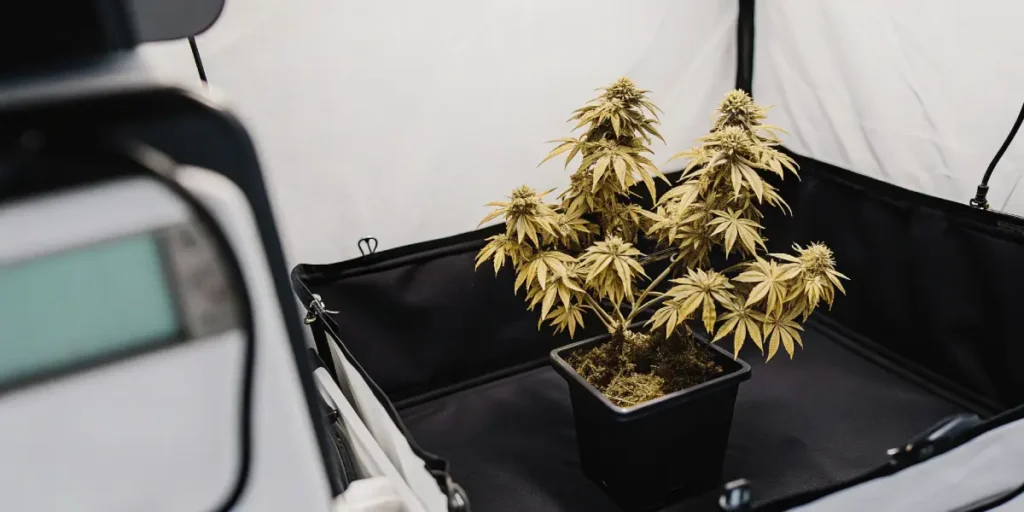
How to Germinate & Propagate LSD Auto
Germinating LSD Auto seeds is the first critical step toward a successful and healthy cannabis harvest. Begin by obtaining high-quality LSD Auto seeds from a reputable supplier to ensure genetic integrity and potency. The paper towel method is one of the most popular germination techniques and is recommended for LSD Auto seeds. To start, moisten a paper towel with distilled water, ensuring it is damp but not soaking wet. Place the seeds on one half of the paper towel and fold the other half over them. This creates a humid environment conducive to sprouting.
Once your seeds are wrapped in the damp paper towel, place them in a sealable plastic bag or between two plates to maintain humidity levels. Store the setup in a warm, dark location such as a drawer or cupboard, maintaining a temperature range of 70-75°F (21-24°C). Check the seeds daily to ensure the paper towel remains moist and to monitor their progress. Typically, LSD Auto seeds will take 24 to 72 hours to develop taproots. Once the taproot is about a centimeter long, the seeds are ready for soil transfer.
In terms of propagation, once your seeds have germinated, it’s time to plant them in a suitable medium. Use small pots filled with a light and airy soil designed for seedlings. Make a small hole around 0.5 inches deep in the center of the soil, gently plant the seed taproot-side down, and cover it lightly with soil. Position the pots under grow lights or in a well-lit window, ensuring they receive at least 18 hours of light daily. During this phase, maintain consistent moisture levels by watering lightly when the top of the soil becomes dry to the touch, facilitating the strong growth of young LSD Auto seedlings.
As your LSD Auto plants develop roots and stems, gradual acclimatization to the desired growing environment is crucial. If transitioning to a larger space such as a greenhouse or indoor grow tent, ensure the environment mimics the initial light and temperature conditions to reduce transplant shock. If growing outdoors, ensure that the threat of frost has passed before relocating your seedlings. Over time, increase their exposure to new environmental conditions to avoid stress. Proper care and monitoring during this stage will enhance the resilience and growth potential of your LSD Auto plants, leading to a robust yield.
Vegetative Stage: Nurturing Your LSD Auto Plants
The vegetative stage of the LSD Auto cannabis plant is a crucial period that sets the foundation for a healthy and productive flowering phase. During this stage, the plant focuses on developing a robust root system, strong branches, and dense foliage, which will support the plant in later stages. Typically lasting around 3 to 5 weeks, the vegetative phase requires careful attention to light, water, and nutrients. Ensuring optimal conditions during this time will lead to a bountiful harvest.
Light plays an essential role in the vegetative stage of the LSD Auto plant. While these autoflowering strains are more flexible with light cycles compared to photoperiod strains, providing them with a consistent light source of around 18-20 hours daily will maximize their growth potential. High-quality LED lights or a combination of metal halide and high-pressure sodium lights can provide a full spectrum that mimics natural sunlight, ensuring your plants thrive.
Watering is another critical aspect of nurturing your LSD Auto plants during the vegetative stage. Overwatering is a common mistake that can lead to root rot and other issues. Employ a careful watering schedule, ensuring the soil is kept moist but not waterlogged. A good tip is to allow the top inch of the soil to dry out between watering sessions. Monitoring the humidity levels and maintaining a stable environment between 55-70% humidity will also aid in preventing stress and promoting healthy leaf development.
Feeding your LSD Auto plants with the right nutrients is vital during the vegetative stage. A balanced nutrient mix high in nitrogen will support leafy growth. Start with a lower concentration of nutrients and gradually increase as the plant matures, keeping a watchful eye for any signs of nutrient burn or deficiencies. It’s also beneficial to occasionally flush the soil to prevent salt build-up, ensuring a clean nutrient uptake.
Throughout the vegetative stage, regular maintenance and observation are necessary to identify and resolve any issues promptly. Inspect your plants for pests or diseases and address them swiftly using appropriate treatments. Engaging in low-stress training (LST) techniques can also promote an even canopy and improve light penetration. Overall, careful nurturing through monitoring and adjusting the environmental conditions will lead to robust LSD Auto plants that are well-prepared for a productive flowering stage.
Flowering LSD Auto: What to Expect
The LSD Auto is an autoflowering strain that is cherished for its potent effects and relatively quick turnaround time. As this plant transitions into the flowering stage, growers should prepare for a fascinating evolution. Typically, the flowering phase begins approximately 4 to 5 weeks after germination and lasts for another 7 to 8 weeks. During this time, the LSD Auto showcases a remarkable transformation, revealing dense and resinous buds. Growers should monitor environmental conditions meticulously to optimize the plant’s output, ensuring adequate lighting, humidity, and nutrient protection.
As you observe the LSD Auto during its flowering phase, you’ll notice the formation of buds that emit a robust, skunky aroma with sweet and earthy undertones. These aromatic qualities intensify the overall growing experience and hint at the potent effects to follow. LSD Auto is known for producing heavy coats of trichomes, contributing significantly to its psychoactive potential. The buds tend to be compact and filled with vibrant orange pistils, enhancing their visual appeal. Providing consistent light exposure and maintaining an optimal photoperiod are crucial steps to maximizing the plant’s potential.
Moreover, the flowering stage of LSD Auto necessitates particular attention to its nutrient requirements. As it develops its flowers, the plant’s demand for phosphorus and potassium increases. Therefore, it is advisable to switch to a bloom-specific fertilizer to meet these needs effectively. Ensuring that the soil pH level remains within the ideal range (6.0-7.0) is equally important for nutrient uptake and overall plant health. Adjust your feeding schedule according to the plant’s growth cycle to prevent nutrient burn and encourage robust flowering.
In conclusion, the LSD Auto strain offers a rewarding flowering experience full of aromatic blooms and potential bliss. By maintaining ideal environmental conditions and adhering to appropriate nutrient regimens, growers can achieve substantial yields and resin-rich buds. It is essential to be patient and attentive throughout this period to truly appreciate the unique characteristics of this strain. As the flowering stage draws to a close, your patience and care will be rewarded with a harvest that promises a memorable psychoactive journey.
Feeding lsd auto: Fertilizers & Nutrient Schedule
Feeding your LSD Auto cannabis plant requires careful attention to its unique nutritional needs. Being an autoflowering strain, LSD Auto does not follow the traditional photoperiod-based growth stages, which means it demands a specific nutrient schedule tailored to its rapid lifecycle. Autoflowers typically have a shorter vegetative stage, requiring growers to slightly alter their nutrient plans. Start with a balanced, high-quality soil medium as your foundation to ensure your plants receive essential nutrients right from seedling stage. Supplement this with organic matter to maintain optimal soil health.
In the initial stages of growth, focus on providing nitrogen-rich nutrients to facilitate strong vegetative growth. Products specifically formulated for vegetative growth are ideal during the first two to three weeks. As LSD Auto progresses to the flowering phase, which usually begins around week four or five, gradually shift to bloom nutrients high in phosphorus and potassium. This advanced feeding strategy ensures your plants develop robust buds and an overall healthy structure. It’s essential to monitor plant response; slight adjustments based on environmental conditions and plant health can optimize nutrient uptake and overall growth.
Maintaining a pH level between 6.0 to 7.0 is paramount to proper nutrient absorption. Regularly test and adjust the pH of your nutrient solutions and soil. LSD Auto plants are more sensitive to overfeeding compared to their photoperiod counterparts, so it’s wise to begin with slightly weaker nutrient solutions and incrementally increase as needed. Incorporate a regular watering schedule, allowing the soil to dry out slightly between watering, which will prevent overwatering and reduce the risk of nutrient lockout.
For enhanced terpene profiles and robust flower production, consider adding micronutrients like calcium, magnesium, and sulfur, especially if using water that is distilled or lacking in minerals. Utilizing organic fertilizers or nutrient lines specifically designed for cannabis can help fine-tune the nutrient intake. Lastly, consider implementing a weekly flush with water to clear any potential nutrient buildups. This careful approach will help maintain plant health while optimizing the quality and yield of your LSD Auto harvest.
Pest and Disease Prevention for Healthy Cannabis Plants
LSD Auto, a robust and resilient cannabis strain, nevertheless requires diligent care to prevent pests and diseases that can compromise plant health and yield. Understanding the most common threats and implementing preventative measures is key to cultivating successful crops. A proactive approach not only mitigates risks but also promotes a thriving growing environment, ensuring your LSD Auto plants flourish throughout their lifecycle.
Start prevention by maintaining impeccable hygiene in your growing space. This includes cleaning tools, pots, and surfaces regularly, as well as ensuring that your grow room is free from debris where pests could hide or breed. Disinfecting tools and equipment before and after each use helps prevent the spread of bacteria and pathogens that could infect your plants. Also, managing plant residues by disposing of waste can significantly reduce the likelihood of diseases taking hold.
Creating a balanced ecosystem in your grow room is another critical strategy. Introducing natural predators, such as ladybugs or predatory mites, can help control pest populations without the need for chemicals. These beneficial insects consume common harmful pests, providing an organic solution to pest management. Additionally, utilizing companion planting techniques, such as planting marigolds or basil nearby, can naturally repel certain pests due to their aromatic properties.
Monitoring your plants regularly is essential for early detection of pest infestations or disease symptoms. Check for unusual spots, webbing, or discoloration on the leaves, as these could indicate the presence of pests like spider mites or aphids. Prompt identification allows for swift intervention, which can prevent minor issues from escalating into severe problems that affect plant health.
Implementing an integrated pest management (IPM) plan, which includes scheduled inspections and maintenance routines, can significantly reduce the risk of pest and disease outbreaks. Combining physical barriers like sticky traps with environmental controls, such as correct humidity and temperature management, enhances the plant’s resistance to both insects and pathogens. The goal is to create a harmonious growing environment that naturally deters potential threats.
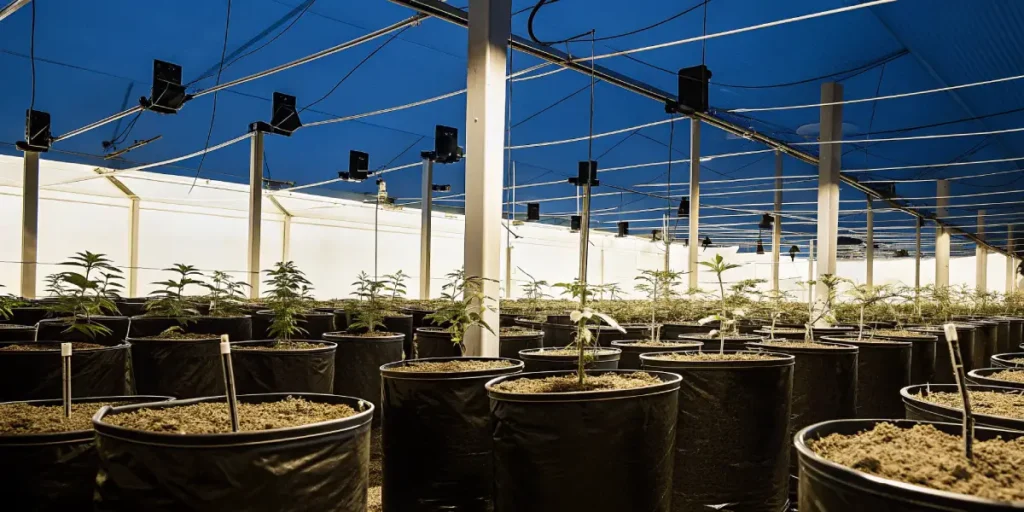
Harvesting & Drying LSD Auto the Right Way
The journey of growing LSD Auto, a popular autoflowering cannabis strain, culminates in the crucial stages of harvesting and drying. Harvesting at the right time is key to ensuring that you get the maximum potency and flavor from your plants. Typically, the ideal time to harvest LSD Auto is when the majority of the trichomes have turned milky white, with some amber ones mixed in. This usually occurs around 70 to 80 days after germination. Observing the pistils is also crucial; they should have turned from white to a reddish-brown color by harvest time. Use a magnifying glass or jeweler’s loupe to accurately monitor trichome development.
Once you determine the perfect moment for harvesting, it’s important to proceed meticulously to avoid any damage to the plants. Begin by cutting the plant at the base and proceed to trim away the large fan leaves. If you’re aiming for a slower drying process, leaving the smaller sugar leaves attached can help slow evaporation, which can enhance the flavor profile of the buds. For a precise cut, ensure you have the necessary tools such as sharp, sterilized scissors or pruning shears ready for use.
After harvesting, drying LSD Auto correctly is essential to prevent mold and ensure the best quality smoke. Hang the trimmed branches upside down in a dark room with a consistent temperature of 60-70°F (15-21°C) and relative humidity around 40-50%. This environment helps prevent the buds from drying too quickly, preserving terpenes and cannabinoids. Ensure good air circulation by using fans, but avoid pointing them directly at the plants, as this can cause the buds to dry unevenly.
The drying process typically takes 7-10 days. You’ll know the buds are ready when the smaller stems snap rather than bend. Once this stage is complete, it’s time for curing, which further enhances the flavor, smoothness, and potency of your harvest. Properly dried and cured LSD Auto provides a unique and enjoyable experience with its psychedelic effects and sweet, earthy flavors.
lsd auto Strain Type: Indica, Sativa or Hybrid?
When exploring the world of cannabis strains, the LSD Auto variety often catches the attention of cultivators and enthusiasts alike for its unique characteristics. But what exactly is its lineage, and does it lean more towards Indica, Sativa, or a balanced Hybrid profile? LSD Auto is primarily known as a well-balanced hybrid strain that is a result of crossing the LSD strain with a ruderalis to produce its autoflowering properties. This hybridization ensures that LSD Auto carries both Sativa and Indica traits, making it a versatile choice for a wide range of users.
The Indica influence in LSD Auto is evident in its robust growth patterns and physical effects. Typically, Indica-dominant strains are known for their short, bushy plants that can often thrive in varying conditions, and LSD Auto is no exception. With a structure conducive to indoor and outdoor growing environments, this strain tends to carry the resiliency and efficiency associated with Indica genetics. Additionally, the Indica properties lend to the strain’s relaxation and body-focused effects, making it popular among those looking to relieve stress and unwind.
On the other hand, the Sativa aspects of LSD Auto cannot be overlooked. The Sativa genetics contribute to the cerebral and uplifting experiences that users frequently report. This does not just enhance mood but also boosts creativity and sociability, making this strain a suitable option for daytime use as well. With a slight Sativa edge, LSD Auto offers a balanced euphoria and mental clarity, counteracting the couch-lock potential generally associated with pure Indica counterparts.
LSD Auto is best described as a balanced hybrid that effectively combines the strengths of both Indica and Sativa varieties. This balance makes it an excellent choice for growers and users seeking diversity in effects, grow conditions, and applications. It’s these rounded and versatile characteristics that make LSD Auto a standout in the cannabis community. Whether you are growing or consuming, understanding its hybrid nature will allow you to fully appreciate what this intriguing strain has to offer.
Why Grow LSD Auto? Key Benefits for Cultivators
Growing LSD Auto offers a range of benefits that cater to both novice and experienced cultivators. One of the most significant advantages is its autoflowering nature, which means the plants automatically transition from the vegetative stage to the flowering stage without needing a change in the light cycle. This characteristic allows for faster harvests, enabling cultivators to enjoy multiple growth cycles per year. Additionally, it simplifies the growing process, making it an ideal choice for those who may not have extensive experience managing light schedules.
LSD Auto is known for its resilience and adaptability to various growing environments. Its robust genetics make it highly resistant to pests and diseases, reducing the need for extensive interventions and chemical treatments. This resilience is particularly beneficial for outdoor growers who cannot always control environmental factors as precisely as indoor cultivators. Thanks to its compact size, LSD Auto is also well-suited for indoor growing, where space optimization can be critical, providing flexibility for those with limited growing areas.
The strain is celebrated for its impressive yield potential despite its compact stature. Cultivators report generous yields with potent effects, making it a worthwhile investment in terms of time and resources. The LSD Auto strain is renowned for its unique, intense psychedelic effects, courtesy of its high THC levels, which are well-regarded among enthusiasts. This combination of high yield and strong effects ensures that growers can produce a product that is both abundant and appealing to a wide audience, further cementing its status as a popular choice in the autoflowering category.
Potential Challenges When Growing LSD Auto
Growing the LSD Auto strain can pose several unique challenges that require careful attention to mitigate. One of the primary challenges is managing environmental conditions, as the LSD Auto is an autoflowering variety and is sensitive to extreme fluctuations in temperature or humidity. It’s essential to maintain a consistent environment to optimize growth and prevent stress, which can affect the yield and potency of the plants. Making use of a reliable temperature and humidity monitoring system can assist in keeping these factors stable throughout the plant’s life cycle.
Another significant challenge when cultivating LSD Auto is nutrient management. Autoflowering strains like LSD Auto generally require fewer nutrients compared to their photoperiod counterparts. Overfeeding can easily lead to nutrient burn, which significantly stunts growth and diminishes the quality of the final product. Growers need to establish a balanced nutrient schedule, preferably utilizing low-concentration formulas on an as-needed basis. Monitoring nutrient levels and maintaining a proper pH balance in the growing medium can further prevent deficiencies and toxicities.
Pest and disease control is also a concern when growing LSD Auto. This strain is relatively hardy but can still be vulnerable to common cannabis pests like spider mites and aphids, as well as diseases like powdery mildew. Implementing preventative measures such as regular plant inspections, maintaining cleanliness, and using pest deterrents can reduce the risk of infestations. Additionally, organic pest control solutions should be prioritized over chemical interventions to ensure a healthy plant development and a consumable end product.
Lastly, the speed of the entire growth cycle for LSD Auto, typically being ready to harvest in as little as 8-10 weeks from germination, means that growers have a limited window to optimize plant care. The auto-flowering nature gives less control over vegetative and flowering phases, requiring growers to be proactive with their care strategies. It demands a well-planned schedule to ensure every stage of growth receives the necessary attention, leading to optimal yields and quality.
Is lsd auto Worth Buying? Here’s What You Need to Know
When considering adding “lsd auto” to your cannabis garden, understanding its unique attributes is crucial. LSD Auto is a popular autoflowering cannabis strain that is known for its ease of cultivation and robust growth, appealing to both novice and experienced growers alike. This strain is a result of crossing the classic LSD strain with autoflowering genetics, which brings a wealth of benefits, such as a reduced growth cycle and an ability to thrive in a variety of climates, making it a versatile choice for growers everywhere.
Beyond its cultivation benefits, LSD Auto is particularly valued for its potent effects and distinct flavor profile. The strain typically offers a high THC content that can reach up to 23%, promising an intense cerebral high that is both euphoric and uplifting. It’s often favored for its therapeutic potential, as users have reported relief from stress, depression, and chronic pain. Furthermore, its flavor combines earthy, citrus, and sweet notes, making it a delightful experience for the senses. These attributes might make it especially attractive for recreational users looking for a balanced yet strong experience.
However, when deciding if LSD Auto is worth buying, potential growers should consider their specific gardening objectives and limitations. The strain’s autoflowering nature means it has a fixed growth cycle, which may not accommodate those seeking to maximize yield through extended vegetative growth. Additionally, while it is easy to cultivate, achieving its full potential requires a careful balance of nutrients and light. Therefore, assessing your cultivation skills and environment is imperative to decide if LSD Auto aligns with your goals. For those prepared to meet its requirements, LSD Auto can be a rewarding addition to a cannabis collection.
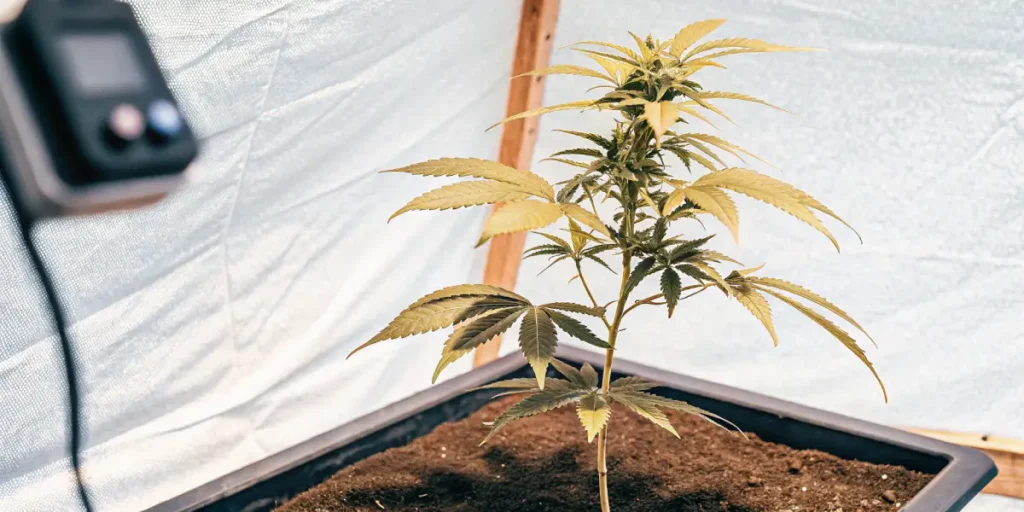
FAQs about LSD Auto
What is LSD Auto?
LSD Auto refers to a strain of cannabis that is known for its ease of growth and automatic flowering characteristics. It is a hybrid variant, combining traits from the potent LSD strain with an autoflowering variety, typically derived from Ruderalis genetics. This results in a plant that doesn’t rely on light cycles to trigger flowering, thereby offering growers a simpler cultivation process with predictable results.
How does LSD Auto differ from regular LSD strains?
The primary difference between LSD Auto and regular LSD strains is the autoflowering capability of the former. While regular LSD strains require specific light cycles to transition from vegetative to flowering stages, LSD Auto can flower automatically based on age. This makes it particularly appealing to beginners or those growing in environments with unpredictable light exposure. Additionally, LSD Auto typically has a shorter overall lifecycle, promoting faster harvests.
What are the effects of consuming LSD Auto?
Consumers of LSD Auto can expect a potent high characterized by a balance of cerebral and physical effects. It tends to induce feelings of euphoria, creativity, and relaxation. The strain is known for its psychedelic effects, reminiscent of its parent, the LSD strain. Users often report enhanced sensory perception and slight visual distortions, making it suitable for recreational and medicinal use, where creativity and stress relief are desired.
What are the optimal growing conditions for LSD Auto?
LSD Auto thrives in various growing conditions, making it versatile for both indoor and outdoor cultivation. For optimal results, growers should ensure well-draining soil and maintain a stable environment with temperatures ranging from 21°C to 26°C (70°F to 79°F). Adequate ventilation and controlled humidity levels are crucial indoors to prevent mold. Outdoors, it benefits from a warm, sunny climate. Its autoflowering nature allows it to perform well in smaller spaces due to its compact size.
How long does it take for LSD Auto to reach maturity?
LSD Auto typically reaches maturity and is ready for harvest within 8 to 10 weeks from germination. This rapid lifecycle makes it a popular choice for growers looking for a quick turnaround while retaining quality. The plant’s autoflowering trait means that growers do not have to adjust light cycles, significantly reducing the time-to-harvest compared to photoperiod strains. This speed does not compromise the plant’s potency or yield, making it a practical option for many cultivators.

